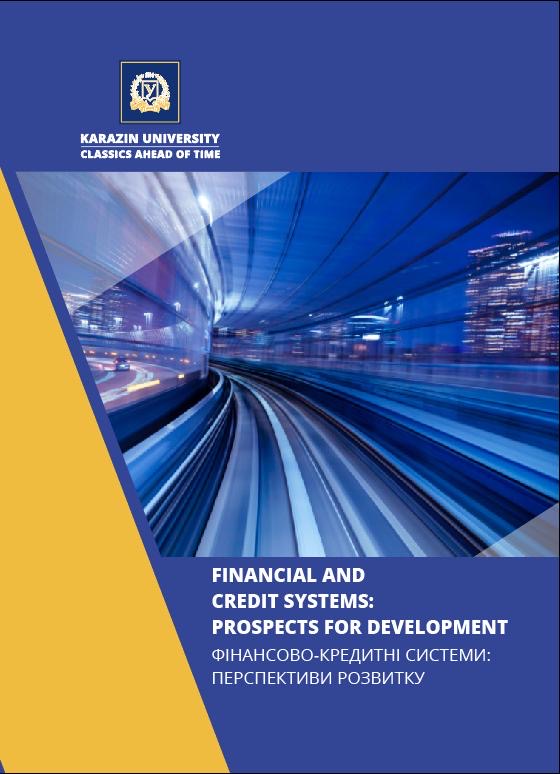Role of blockchain technology in changing the structure of a country's monetary base and GDP
Abstract
This article explores the role of blockchain technology in changing the structure of a country's monetary base. Specifically, it examines the potential benefits and risks of using blockchain in monetary policy, such as efficiency, transparency, and new opportunities for managing the financial system. The article highlights changes in approaches to monetary policy through the use of blockchain-based digital currencies, as well as discusses challenges that may arise in implementing this technology. The conclusions of this article may be valuable for government agencies, central banks, and researchers interested in the impact of blockchain technology on the financial sector. In recent years, the adoption of blockchain technology as an alternative to fiat currencies in various countries around the world has significantly expanded globally, as a significant number of business organizations have recognized the importance of all the advantages that blockchain technology provides. Previously, the focus was on cost control to remain competitive, but lately blockchain technologies have somewhat shifted the significance and monetary mass, influencing the structure of a certain country's monetary base. Based on recent research and publications, the article emphasizes the importance of understanding economic principles that govern the determination of the impacts of various economic and financial indicators on components of economic growth and predicting the consequences of such decisions. It references the seminal work of economists P. Romer, R. Lucas, R. Barro, I. Salla y Martin, and R. Levine, who laid the foundation for studying endogenous economic development. The purpose of this article is to investigate the practice of implementing blockchain technology in the financial support of various economic processes of economic entities and their impact on the structure of a country's monetary base. Thus, it has been identified that the influence of blockchain on the structure of the monetary base itself has received little attention. Despite blockchain being used as an alternative to components of the monetary base, thereby changing its structure within a certain country, most studies focus on literature reviews and provide information for practitioners and academic communities. Therefore, this article aims to bridge the gap by developing a model to identify distortions in the structure of the monetary base under the influence of blockchain. The effective use of blockchain is still being explored. As a result, the operations of many companies using blockchain technologies for payments are vulnerable to technical issues. Blockchain technology is utilized to address this problem and facilitate data exchange among relevant stakeholders. This document presents a benchmark for the impact of blockchain technology on the structure and mass of the monetary base for a specific country, integrating blockchain for sustainable money functioning with the integration of the Internet of Things and big data. Finally, potential benefits and limitations are analyzed during the implementation of this framework. Methods. Macroeconomic analysis, econometric analysis, trend analysis. Results. Determination of the level of influence of blockchain technologies on the change in the structure and volume of the monetary base of a certain country. The study casts doubt on classical economic doctrines by establishing a strong correlation between the distribution of components of the monetary base in its structure and the use of blockchain technology for payments for goods, labor, and services. It emphasizes that the economic growth of a country and the structure of its monetary base depend on the proportion of blockchain technology usage in that country. This research opens up possibilities for further studies in this interdisciplinary field.
Downloads
References
Budiarto, D. S., & Indarti, L. (2019). Apakah karakteristik pemerintah daerah berpengaruh pada pengungkapan laporan keuangan pemerintah daerah? Riset pada kabupaten di Jawa Tengah. Jurnal Akuntansi Bisnis, 12(1). [in English].
Goodstats.id (2022, 2 September). Menilik Statistik Korupsi di Indonesia. Diakses pada tanggal 6 Desember Retrieved from https://goodstats.id/article/menilik-statistik-korupsi-di-indonesiaIWZN8 [in English].
Guustaaf, E., Rahardja, U., Aini, Q., Santoso, N. A., & Santoso, N. P. L. (2021). Desain Kerangka Blockchain terhadap pendidikan: A Survey. CESS (Journal of Computer Engineering, System and Science), 6(2), 88-92. [in English].
Nugraha, A. C. (2020). Penerapan Teknologi Blockchain dalam Lingkungan Pendidikan: Studi Kasus Jurusan Teknik Komputer dan Informatika POLBAN. Produktif: Jurnal Ilmiah Pendidikan Teknologi Informasi, 4(1), 302-307. [in English].
Suntsova, O. (2022). Econometric and digital business transformation in INDUSTRY 4.0 AND 5.0 CONCEPTS. Financial and credit systems: prospects for development, 2(5), 36-47. Retrieved from https://www.researchgate.net/publication/366953493_ECONOMETRIC_AND_DIGITAL_BUSINESS_TRANSFORMATION_IN_INDUSTRY_40_AND_50_CONCEPTS [in Ukraine].
Suntsova O.O. (2023) Management and Measurement of Digital Risk in Business. Information Systems and Technologies for Managing Socio-Economic Processes in Economic Sectors: Collective Monograph / edited by Tereshchenko L.O. - B.: UGI. pp. 100-147. 10.5281/zenodo.7924086 https://zenodo.org/record/7924086#.ZFy2MBHP1PY [in Ukraine].
Suntsova O.O. (2023) Econometric Forecasting of Socio-Economic Processes in a Globalized World Amidst Military Uncertainty Financial Space of Ukraine in the Context of Globalization and Deglobalization Transformations: Monograph / Edited by Dr. Sc. in Economics, Professor, Distinguished Scientist of Ukraine S. V. Onyshko. – Irpin : State Tax University. P. 126-158 10.5281/zenodo.8386114 available at https://zenodo.org/record/8386114 [in Ukraine].
Suntsova O.O. (2022) Assessment of the impact of financial technologies and virtual assets on economic growth of the country BUSINESS, INNOVATIONS, MANAGEMENT: PROBLEMS AND PROSPECTS. pp. 139-140 10.5281/zenodo.7556751 available at http://confmanagement.kpi.ua/proc/article/view/271927/267573 https://www.researchgate.net/publication/367310698_OCINUVANNA_VPLIVU_FINANSOVIH_TEHNOLOGIJ_TA_VIRTUALNIH_AKTIVIV_NA_EKONOMICNE_ZROSTANNA_KRAINI [in Ukraine].
Suntsova O. (2022) The Impact of Digital Business Assets and Financial Technologies on the Economic Growth of the Country. Market Infrastructure. 68, рр. 254-260 https://doi.org/10.32843/infrastruct68-44 available at http://www.market-infr.od.ua/journals/2022/68_2022/46.pdf [in Ukraine].
Suntsova O.O. (2023) Digital Economy: textbook - Dnipro: Seredniak T.K., 2023, - 474 p. ISBN 978-617-8139-22-3 10.5281/zenodo.10466880 [in Ukraine].
Winarno, A. (2019, April). Desain E-Transkrip dengan Teknologi Blockchain. In Prosiding Seminar Nasional Pakar (pp. 1-37). [in Ukraine].
Yulianton, H., Santi, R. C. N., Hadiono, K., & Mulyani, S. (2018). Implementasi sederhana blockchain. [in Ukraine].
Copyright (c) 2024 Financial and credit systems: prospects for development

This work is licensed under a Creative Commons Attribution 4.0 International License.

